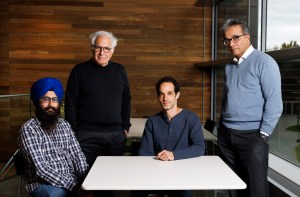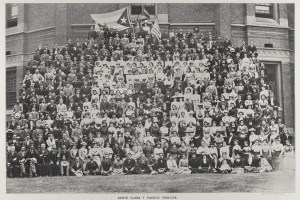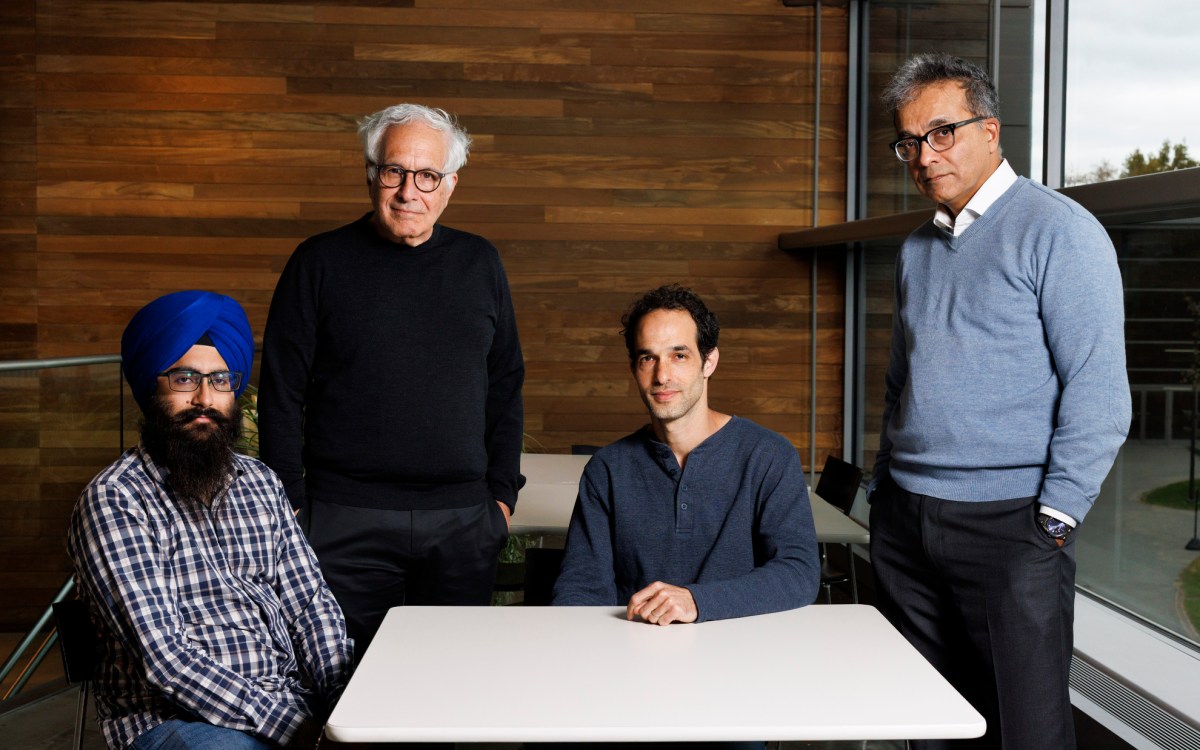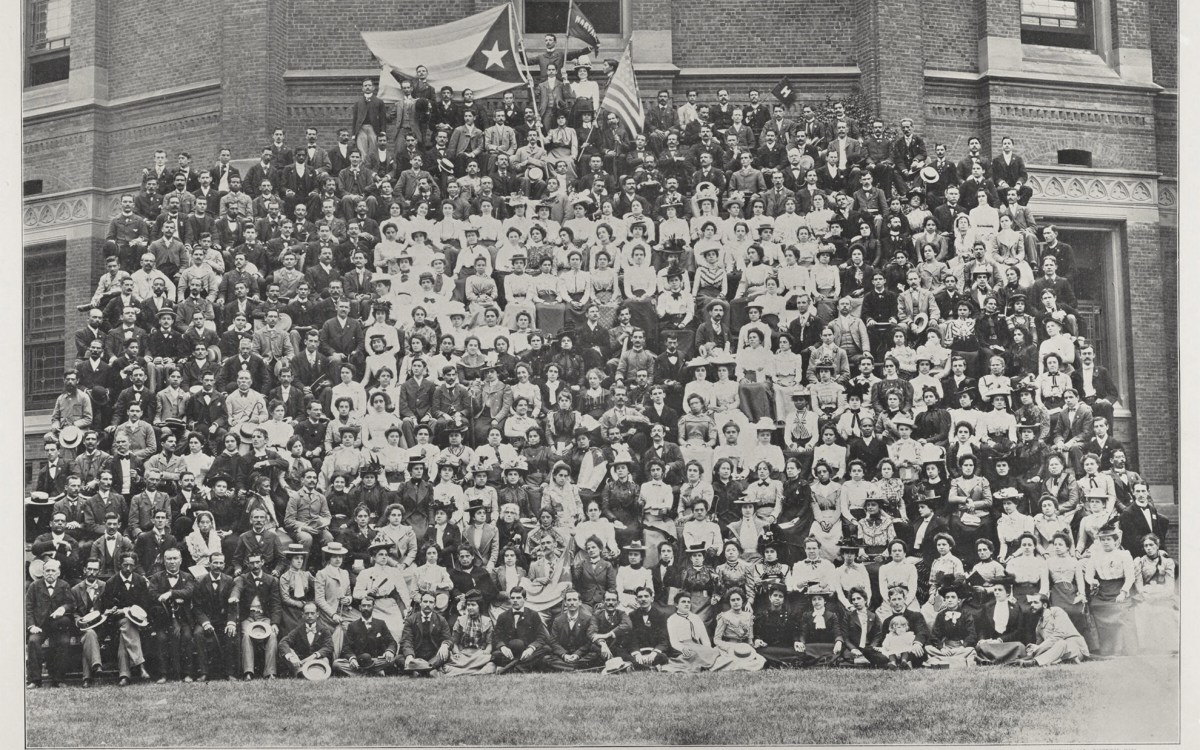The intersection of arts and spirituality: A journey beyond the self

Ethan Seeley, Sherah Bloor, Stephanie Burt, and Nat Raha listen to a poetry reading at the Center for the Study of World Religions in September.
Ashley Zigman/Center for the Study of World Religions.
The mystical state of consciousness experienced by staring into a painting’s intricate brush strokes, listening to the rhythmic tones of a musical composition, watching mesmerizing dance movements, or reading lyric verse from poetic writing can transport us to deeper places where inner-spiritual experience flows freely. Art’s evocative expressions become symbolic road maps to possibilities of transcendence.
“To what degree do the arts open us to religion and spirituality? To what degree is creativity part and parcel of spirituality and religion?” said Charles Stang, director of the Center for the Study of World Religions and Professor of Early Christian Thought at Harvard Divinity School. “What we do here is create the conditions where we can model the intersection of spirituality and the arts, not just talk about it, but do it and support it.”
Spirituality and the arts at the Center for the Study of World Religions at Harvard Divinity School (CSWR) is part of a larger initiative exploring religious and spiritual traditions and practices that nurture transcendence to alternative states of being that can effect change in individuals, communities, and societies. Throughout the academic year, the center offers a selection of events, including poetry readings, musical offerings, art displays, and dance workshops, exploring the connections between artistic expression, self, and spirituality.
Visiting Scholar Carole M. Cusack, professor of religious studies at the University of Sydney, Australia, partnered with the center to host the G.I. Gurdjieff international conference in December. Gurdjieff, a philosopher, mystic, spiritual teacher, composer, and dance teacher, led a global movement in the early twentieth century to awaken people to higher consciousness.
“This work is compatible with a number of the programs at the center; there are aspects of transcendence and transformation. … the whole idea of trying to shift from being an unconscious machine to being a conscious person who will survive the death of the body,” she said.
Visiting Scholar Andrew Shenton, Ph.D. ’98, musician and faculty member at Boston University, is exploring the hallucinogenic qualities of Estonian composer Arvo Pärt’s music. “We know that music does good things to the brain. It’s a drug; it releases endorphins, and it lowers your blood pressure,” Shenton said, who is planning a free organ recital of Pärt’s music in November.
Poetry, according to Sherah Bloor, editor-in-chief of Peripheries, cultivates sensory awareness.
“We are more comfortable in a fantastical world of abstractions than in the material world. We are not good at taste, smell, and feel,” said Bloor. “But poetry opens us to an encounter with the sensory.”
Stang said support of the arts was a guiding mandate in the CSWR’s founding mission statement. “What I have understood the center to be doing since its inception is creating spaces for people to do creative work and reflect on it,” Stang said. “But for my part, I think the arts are an extremely potent portal to, let’s just call it, other layers of reality.”




